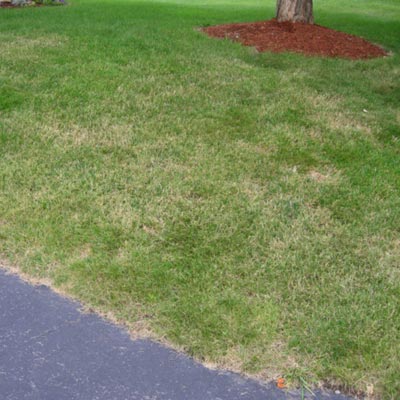First of all, thank you so much for all the useful information on this forum. I managed to put together a python script to detect the lawn boundary for an autonomous lawn mower project I am working on. It can detect the boundary fine if the lawn is 100% green (below). 
However, I encounter an issue if the lawn is not 100% green. This mage below has some patches of other colors, causing the boundary to be broken (below). 
Please let me know if you have any suggestion on how I can fine-tune the script to better detect the boundary for the lawn in the second photo. Original image is here.  .
.
My script is as follows:
#RGB to HSV
img_hsv = cv2.cvtColor(image, cv2.COLOR_RGB2HSV)
#green mask
lower_green = np.array( [40,40,40], dtype = "uint8")
upper_green = np.array( [70,255,255], dtype = "uint8")
mask_green = cv2.inRange(img_hsv, lower_green, upper_green)
output = cv2.bitwise_and(image, image, mask=mask_green)
cv2.imshow('output',output)
#gaussian blur
kernel_size = 3
gauss = gaussian_blur(mask_green,kernel_size)
cv2.imshow('gauss',gauss)
#dilation
kernel = np.ones((kernel_size*2,kernel_size*2),np.uint8)
dilation_image = cv2.dilate(mask_green, kernel, iterations=1)
cv2.imshow('dilation_image',dilation_image)
#morph close
closing = cv2.morphologyEx(dilation_image, cv2.MORPH_CLOSE, kernel)
cv2.imshow('Closing',closing)
#remove small blobs
nb_components, output, stats, centroids = cv2.connectedComponentsWithStats(closing, connectivity=8)
#connectedComponentswithStats yields every separated component with information on each of them, such as size
sizes = stats[1:, -1]; nb_components = nb_components - 1
min_size = 150 #num pixels
img2 = np.zeros((output.shape))
for i in range(0, nb_components):
if sizes[i] >= min_size:
img2[output == i + 1] = 255
cv2.imshow('final',img2)

